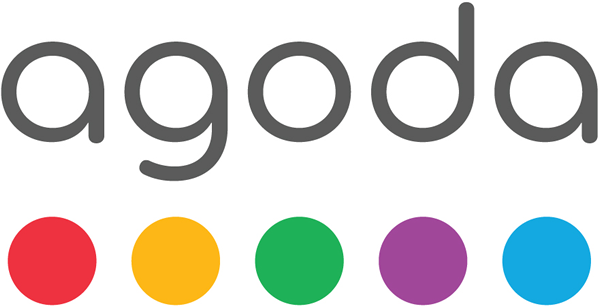Experiencing in Kobe, an artistic port town. “átoa”, a unique fusion of aquarium and art
Did you know that there is an aquarium like a museum in Kobe?
“átoa” is an aquarium which incorporates cutting-edge digital art and stimulates all five senses.
Let’s explore this unique facility, steeped in Japanese aesthetics.
átoa , a succession of surprises ! Is this an aquarium or a museum?
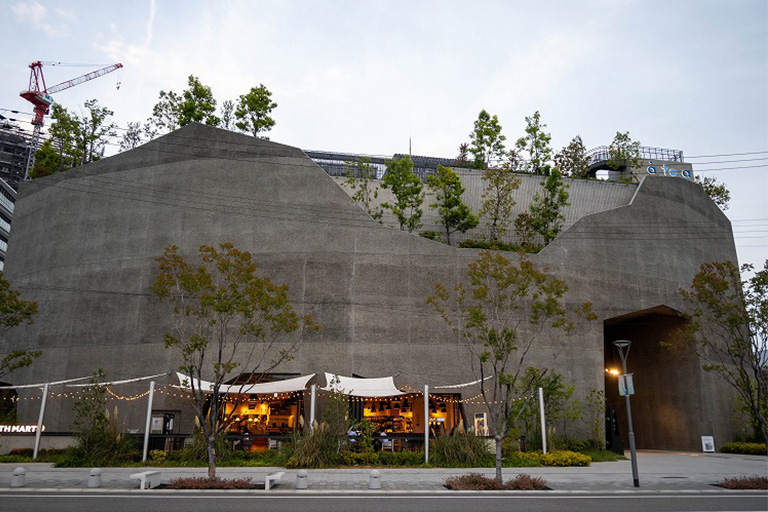
átoa opened in Kobe’s bay area in 2021. It is a theatrical aquarium which incorporates art. It aims to propose a new type of aquarium in a time of diversification of interests.
It is an 8 minutes’ bus ride or 20 minutes’ walk from Sannomiya station, the gateway into Kobe.
The first thing the visitor will be surprised by is its rock-like appearance. The museum’s architecture wants to bring to mind the image of a shape born through the activity of earth crust and the erosion of water. It is a design which also embodies Kobe, located between sea and mountain.
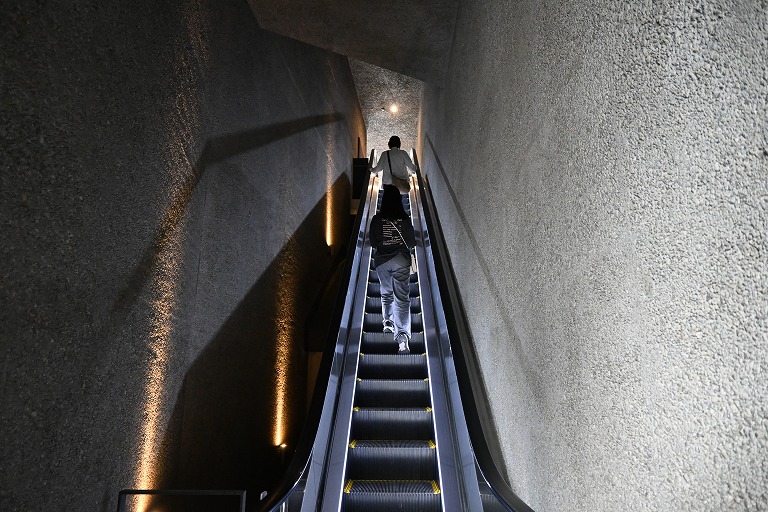
An escalator leads to the entrance, located on the second floor. It gives the visitor the impression of being in a crack between rocks and makes expectation rise naturally with every step.
átoa is divided into 8 zones, each of them with a different concept. As many as 3,000 creatures of 100 different kinds of species coexist in this aquarium.
Many of the exhibits have English translation and you can also get English pamphlets at the reception desk, so international travelers can also enjoy the facility !
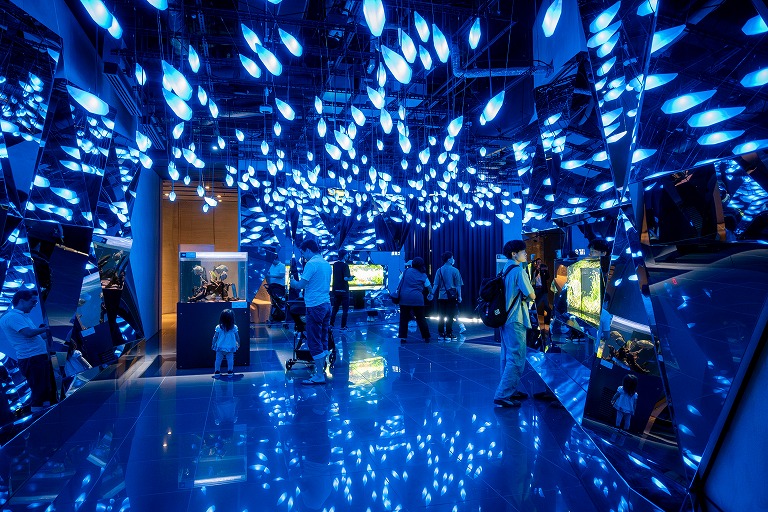
▲In “CAVE/Cave of the Beginning”, tropical fish such as guppy and piranha are on display.
The first zone to welcome visitors, “CAVE/Cave of the beginning”, is built as a cave. The lighting effects that mimicks schools of fish give you the impression of being underwater and surrounded by them.
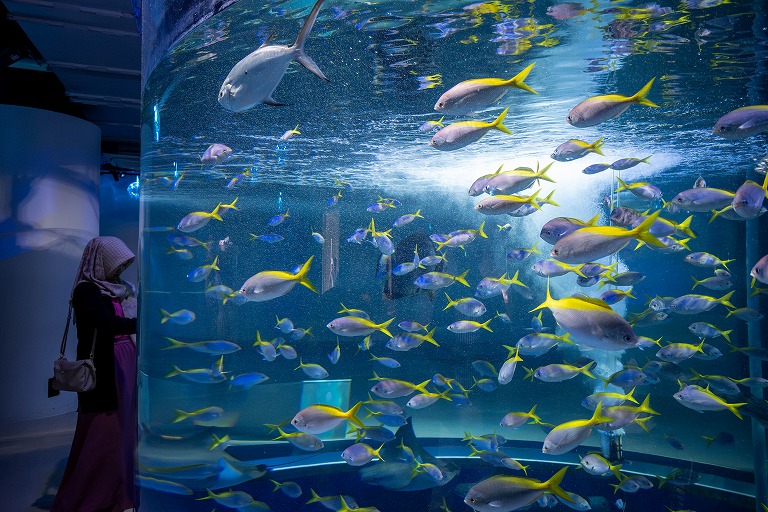
▲Mega Cylinder, which is located in ”MARINE NOTE/The Fluctuation of Life”, is the biggest water tank in átoa. It is a cylindrical shaped water tank 5 meters in diameter.
When you penetrate into “MARINE NOTE/The Fluctuation of Life” sea, which is an imitation of the undersea, you will be struck by a refreshing marine scent. It is rare to find an aquarium that pays attention to details in such a measure.
Another of átoa’s characteristics is that you can hear different kinds of music in each zone. This strange experience is reminiscent of being lost in a theater is to be enjoyed with all five senses.
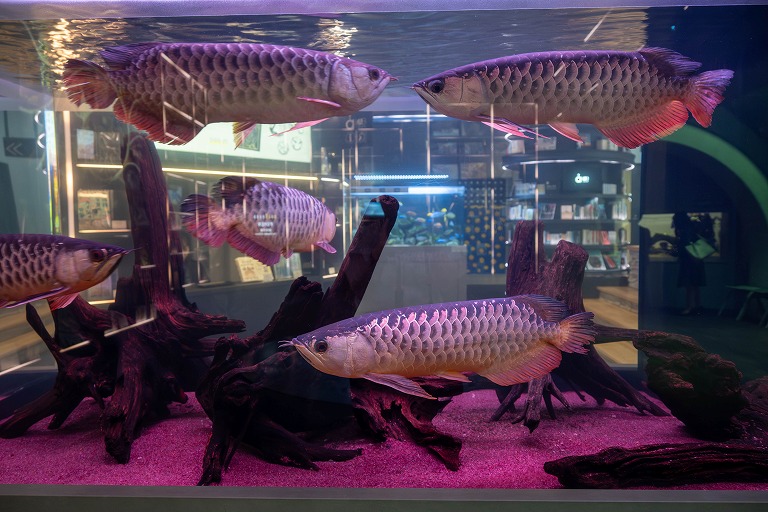
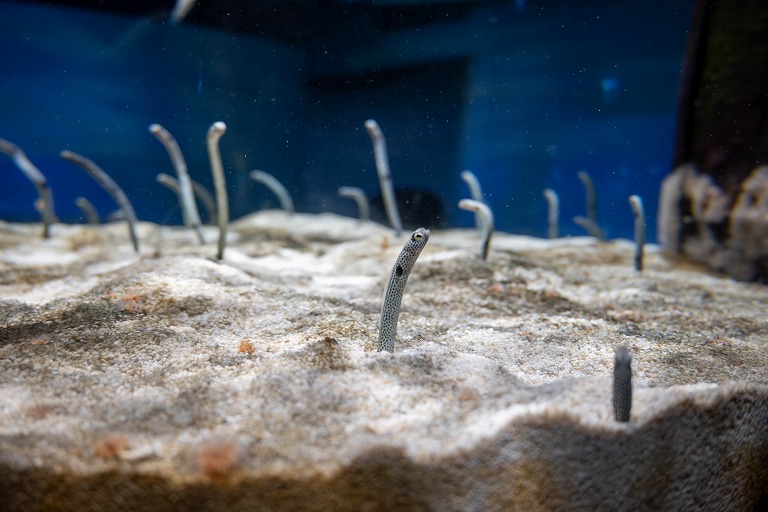
átoa’s staging attract the visitor’s attention to the beauty and unique character of living beings and nature.
By looking at neon-colored fish and unique-looking living species, you will be able to feel that they themselves are art that nature has created.
Every attention, such as not shining light directly onto the aquarium, is being paid to not stressing the living species.
átoa
Adress: 7-2 Shinkouchou Chuo-ku Kobe-city Hyogo-prefecture 650-0041
Business hours: 10:00~19:00 (Last admission is 18:30)
*Business hours might change on certain days.
Holidays : Open all year round (there are days when the museum is closed for maintenance)
Website URL: https://en.atoa-kobe.jp/
There is more to see in átoa than fish! The experience reminiscent of walking in the woods is another appeal of the aquarium.
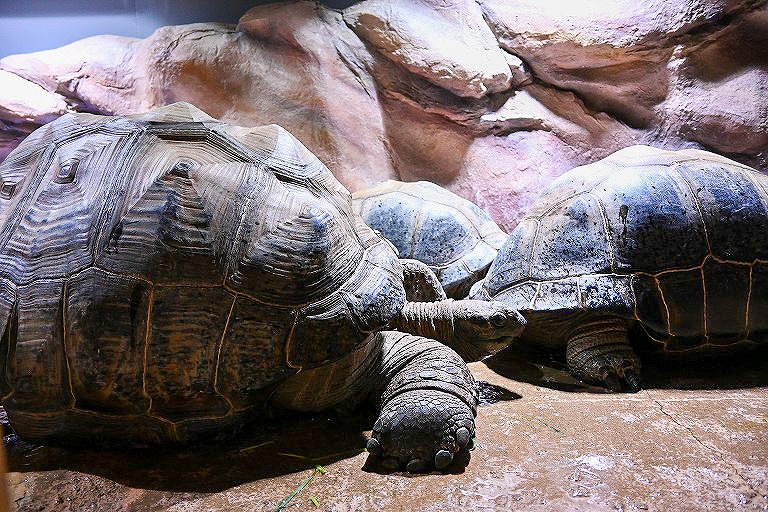
▲Around noon every day is the giant tortoises’ strolling time. They walk around the area freely.
In átoa, other living creatures than fish are also visible.
Especially, in the zone “ELEMENTS/The Forest of Spirits”, which recreates the image of huge woods steeped in the fog, you can meet rare creatures such as the Aldabra giant tortoise, the Parma wallaby, or the naked mole rat which can live for 30 years at most.
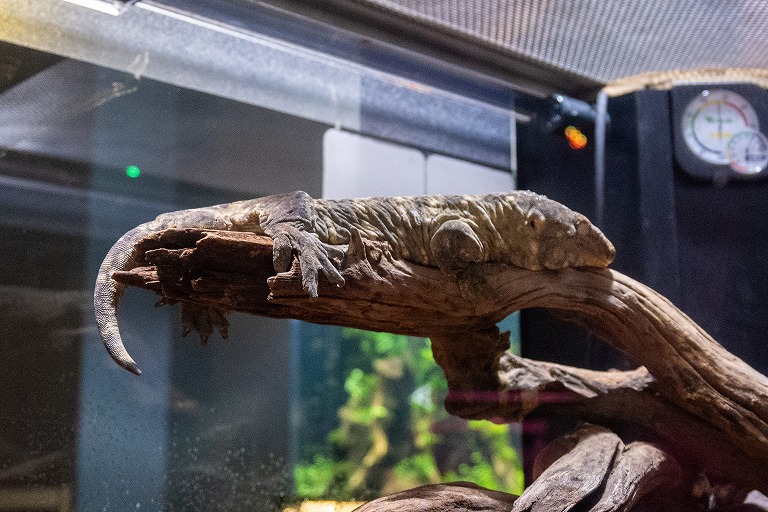
▲New Caledonian Giant Gecko
This is a photograph of a new Caledonian giant gecko, the world’s biggest gecko, whose size goes up to as much as 40cm. Other than that, you can see unique organisms that live in the forest such as newts that swim in water and fluorescent frogs.
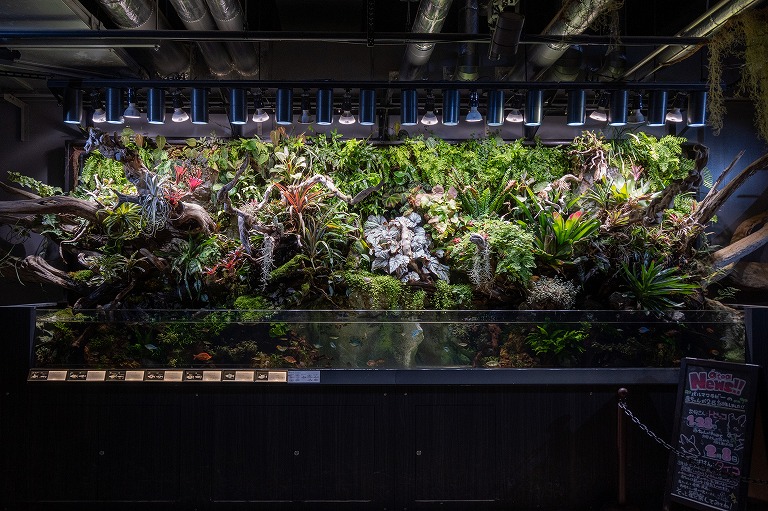
The terrarium that characterizes this zone is made of real plants and trees. It has grown a lot since the aquarium’s opening.
A must-see! An artistic space combining Japanese aesthetics and nature
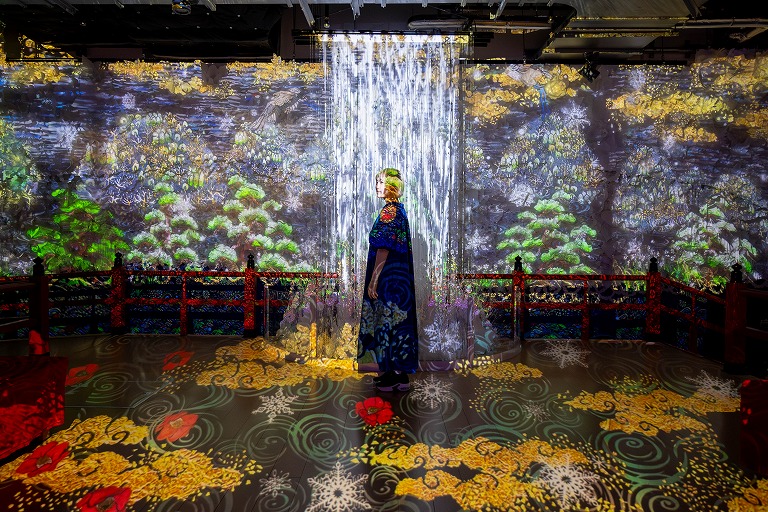
“MIYABI/Light and Shadow” is a zone which has for theme the Japanese seasons and wabi-sabi.
In this space, the wall is covered by an artwork by artist Atsumi Sakai. Sakai, who excels at creating “cutouts of light” has superposed a large number of “cutouts”, which, when shed with light, give birth to a fantastical world.
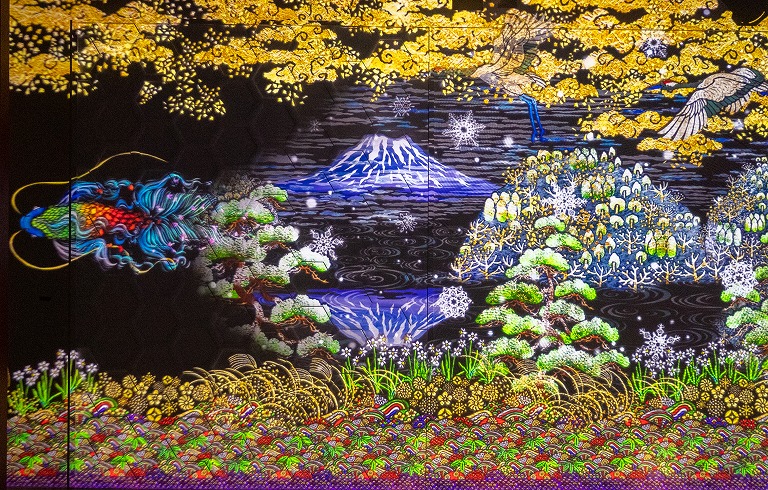
The shadows moving gracefully to the music are at the same time delicate and powerful, and cannot fail to impress visitors.
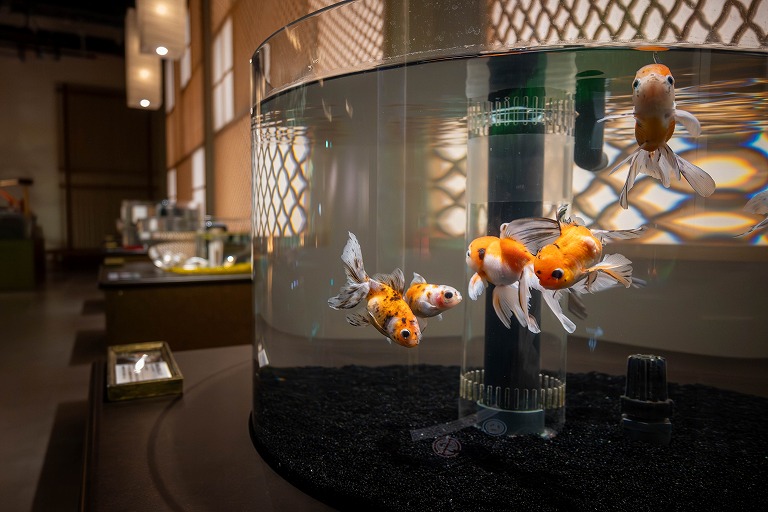
▲Gold fish have been enjoyed by the Japanese as ornamental fish for around 500 years, but they actually look even more beautiful seen from above. Do check for yourselves at átoa.
The display of living creatures that have been appreciated for a long time in Japan such as koi and goldfish are one of the characteristics of this zone.
How many playful artworks can you find?
There are many art exhibits in átoa, about 50 items in total ! Here are some of the striking pieces.
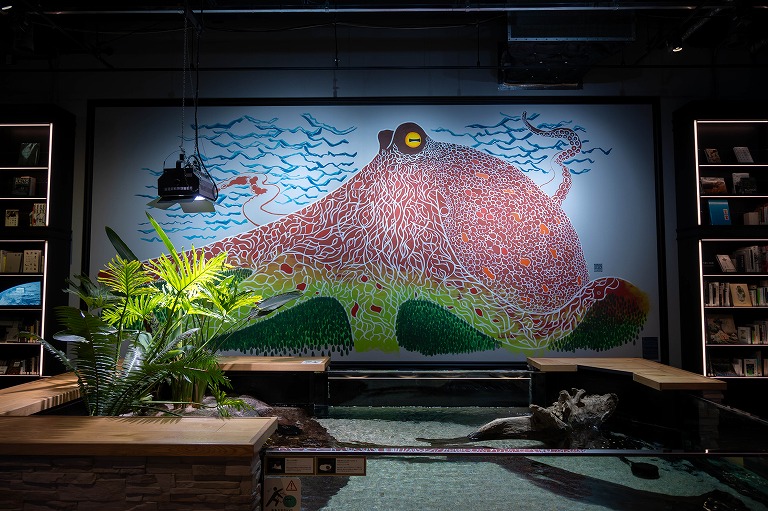
▲”TAKO FUJI”
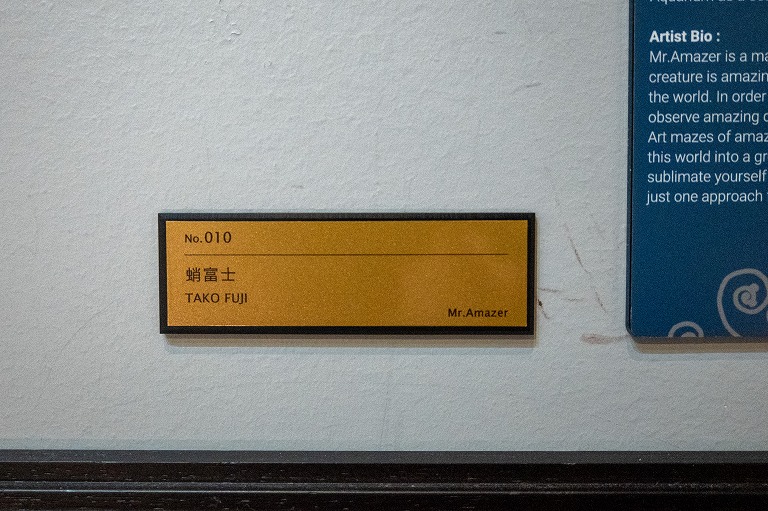
▲Gold plates are placed beside each exhibit. Since there are some small pieces too, use these plates to locate them.
The first artwork is “TAKO FUJI”. Isn’t the precision of the octopus’ design pattern remarkable ?
Its painter, Mr. Amazer, creates mazes in the form of animals. In this painting, the pattern of the octopus turns out to be a maze.
“TAKO FUJI”, which is painted in the style of ukiyoe (engraving representing everyday life scenes from the Edo period), represents an Akashi Octopus**, an animal representative of Hyogo prefecture, in the form of Mt. Fuji.
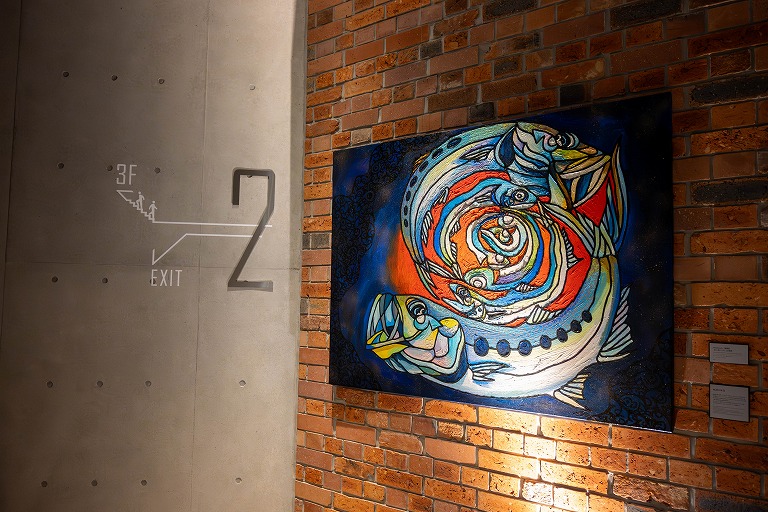
This piece is called “niboshism【circulation】-World shifted red to the right-”. It was painted by artist NAMIKO, who creates many pieces using niboshi***(dried small sardines) as a motif.
Beside these permanent art exhibition, special exhibition and events are held too. Being able to enjoy different things at every visit is another of átoa’s appeals.
(Information regarding special exhibition is on the website)
*Wabi-sabi: a typically Japanese aesthetic concept, which focuses on the respect of simplicity, imperfection, and things that change. This school of thought praises the quiet of nature and old things.
**Akashi Octopus: Name of the common octopus living near Akashi Strait, Hyogo prefecture.
***Niboshi: Food that is made by boiling and drying small fish. It is used to make Japanese soup stock for Japanese cuisine.
It is not over ! Many surprises that will make you lose track of time.
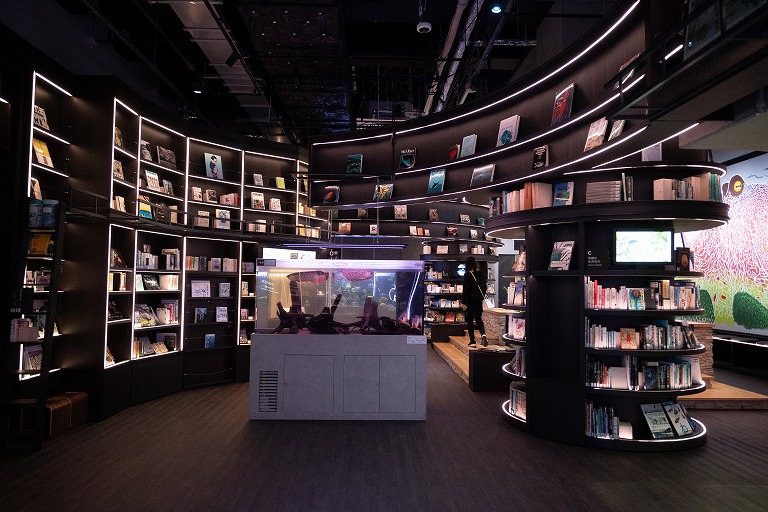
Átoa’s appeal does not only reside in the visit of the aquarium. There are also lots of tricks that stimulate the visitor’s intellectual curiosity !
One of them is the “átoa LAB”. The 2500 books lined up on the bookshelves covering an entire wall are like an underwater library.
The books cover a great variety of genres, such as “Earth and Land”, “The Beauty of nature and art”, etc. Since there are many English books and photograph collections too, you can have fun beyond the language barriers.
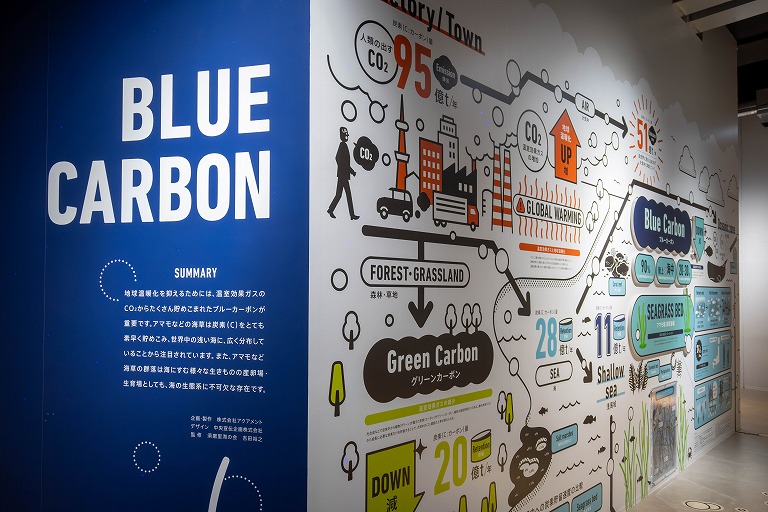
One more thing you will want to take a look at is this wall art.
“BLUE CARBON” is carbon that is absorbed by seaweed or sea animals, and is drawing attention as an important element in the reduction of global warming.
This artword introduces the role of blue carbon and, in particular, the Japanese eelgrass, which is a type of seaweed, that absorbs a considerable amount of carbon.
After enjoying the aquarium, let’s enjoy delicious food and shopping!
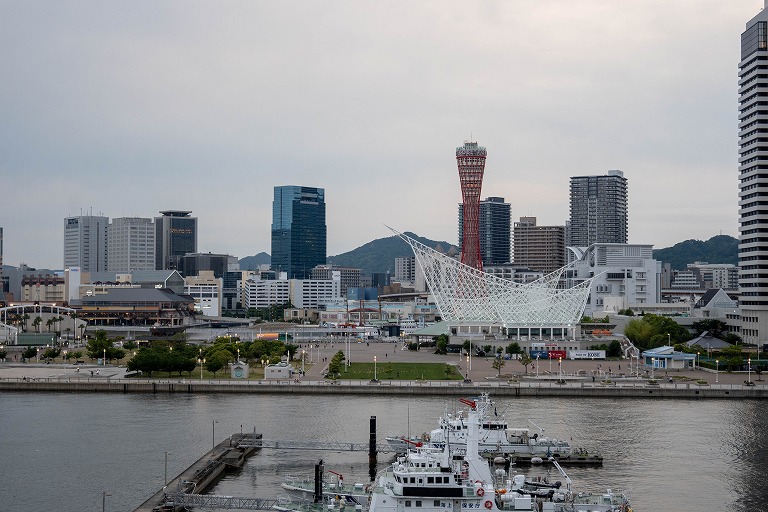
▲ The observation deck is an open area from where you can see the whole Kobe’s bay area.
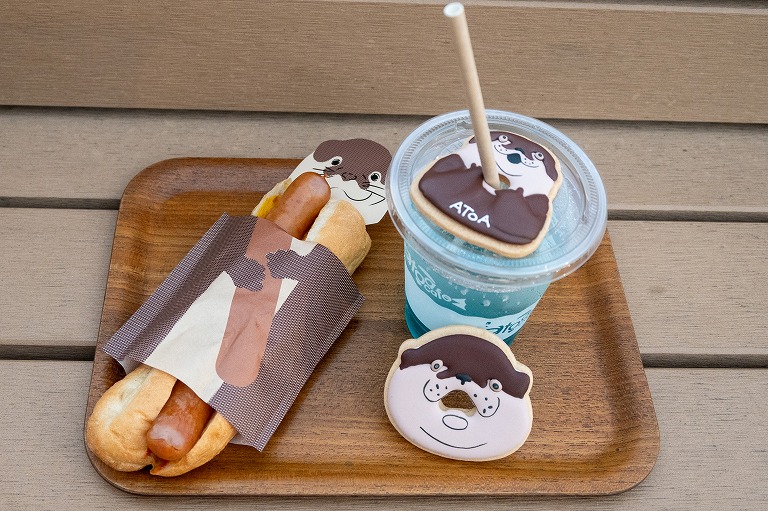
▲ The facial expression of the otter cookie served with the drinks is so cute!
The café on the observation deck is a treasure box filled with cute and delicious things to eat and drink. The foods and drinks shaped as otters in particular are so cute you will hesitate to eat them.
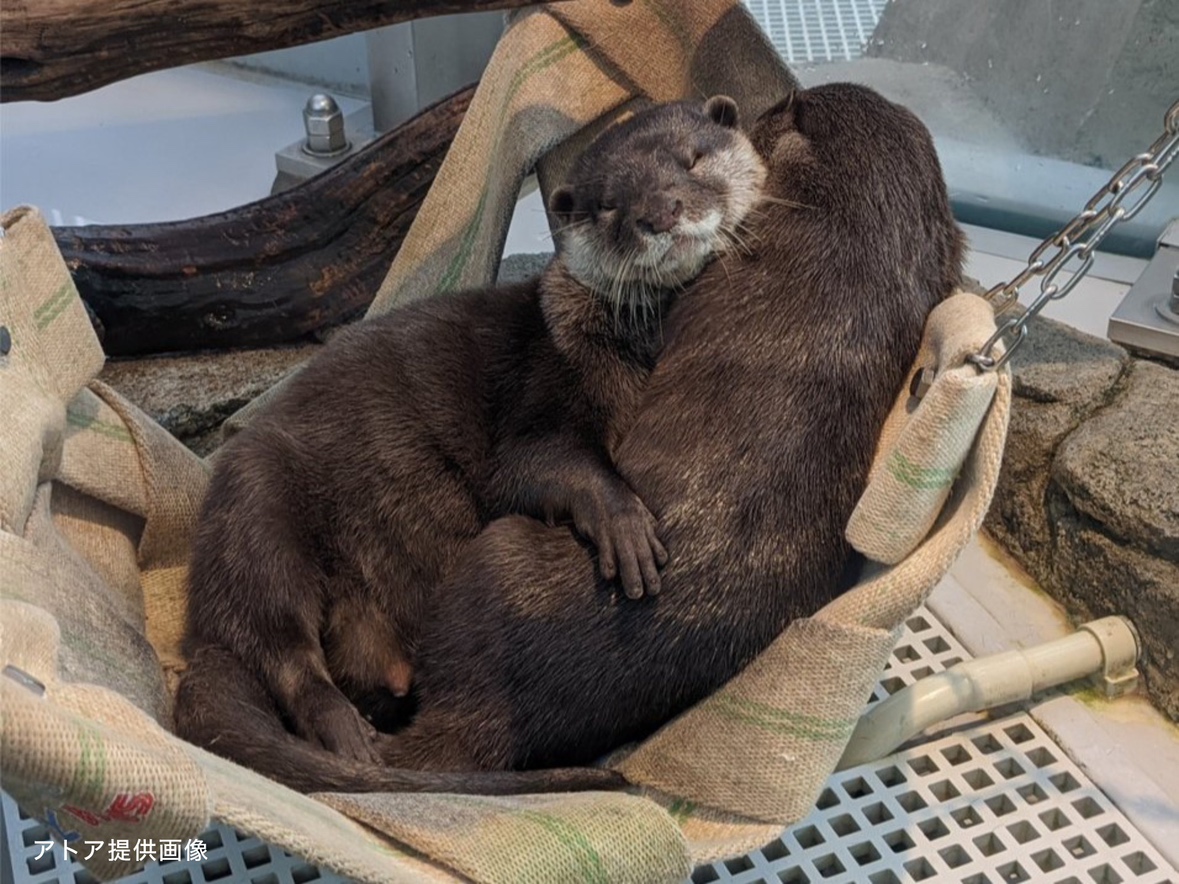
▲Asian small-clawed otter that are bred in átoa are sleeping, hugging each other.
Please compare it with the actual Asian small-clawed otter in the aquarium.
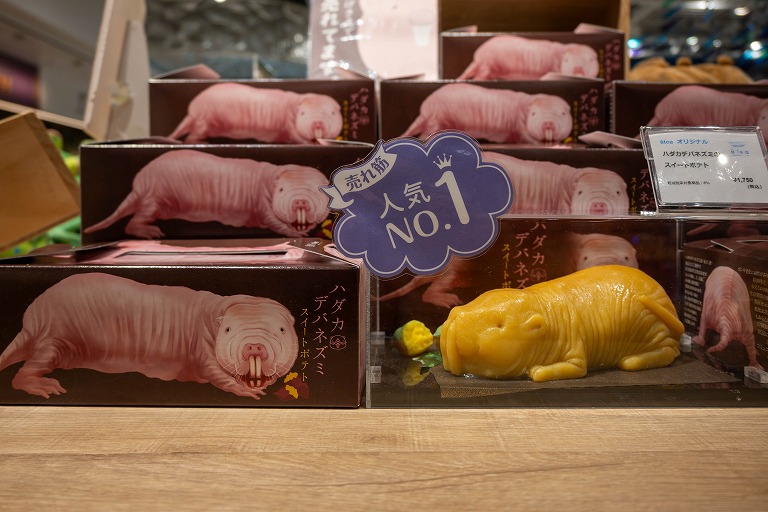
▲Sweet potato in the shape of naked mole rat are reproduced very realistically, with every single wrinkle. Try comparing them with the actual one in zone “ELEMENTS/The Forest of Spirits”.
There are many cute items in the museum shop too!
The most popular item in the shop is the sweet-potato reproduction of the naked mole rat bred in átoa.
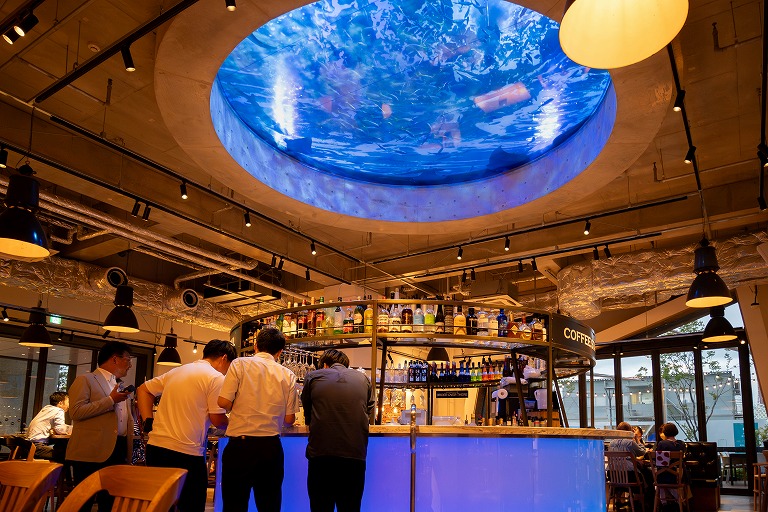
▲Part of the ceiling of the food hall is connected to one of átoa’s water tanks. In the food hall, there are many restaurants that serve local cuisine such as Kobe beef.
As a matter of fact, átoa is not a very big facility. In the website, it says that you can look around the whole aquarium in an hour.
However, upon actually visiting it, I found many lovely spatial design performances that I couldn’t help but take pictures of I also stopped many times just to enjoy the atmosphere. Before I knew it, I found myself spending more than three hours there!
After enjoying café and dinner at the food hall located on the first floor, which is connected with a water tank, please enjoy the nightscape of port area around átoa!
Date : 2024.7.17


